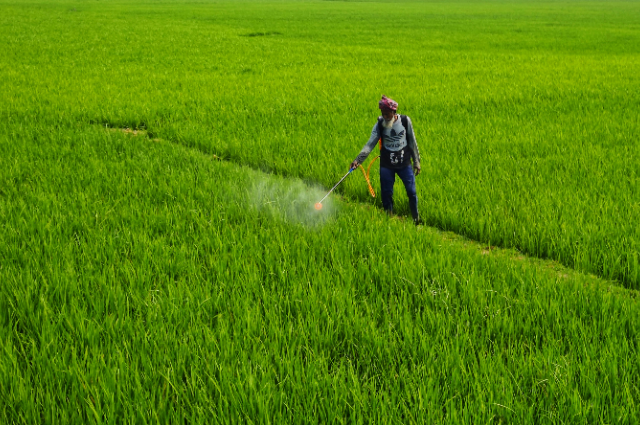
Soil pollution is often an invisible crisis under our feet, shaping the landscape and affecting human health deeply. The story lies in both examples of the real world of observation and in both subtle, technical mechanisms that change a lot of clothing in our environment. This article explains how soil pollution occurs, how it changes the scenario, and why it poses serious risks to public health and ecosystem balance, easily uses reliable examples, and presents a strong yet available scientific logic for a strong history.
All over the world, the landscape is marked by the legacy of industrial activity, agricultural extension, urban development, and miscarriage. For example, in West Bengal, India, decades of critical pesticides made a slow disaster for the local soil. Toxic residues settled deep into the soil, reduced the fertility of the earth, and left the land less productive with each crop. Similar events have appeared in the US Rust Belt, where abandoned factories have left contaminated fields with heavy metals such as lead and cadmium. These pollutants persist for decades, enter into food chains, and constantly change society. The result is a landscape that not only looks different, but also maintains life and society in basic converted ways -sometimes it becomes derogatory, rebirth, but forever replaced by the hidden mark of the earth.
The technical character of soil pollution centers on chemical and biological processes that the contact remains and travels through the ecosystem. Heavy metal, pesticides, petroleum hydrocarbons, and microplastics – follow each soil particle separately. Some, such as lead, form stubborn bonds with soil minerals and organic materials, making reworking difficult. Others, such as pesticides, can bite into groundwater, export pollution away from the source. The essential soil microorganisms die as fertility, and the physical structure of the earth crumbles -brown disappears, the root system is weakened, and erosion increases. In some agricultural regions in North Africa, abuse of chemical fertilizers has inspired widespread soil acidification, limiting crops and inspiring economic difficulties and population change.
Human health is complicated by soil quality. The effects are sometimes immediate, such as headaches, skin rash, asthma, and bronchitis when people live near open dumps or contaminated places, especially under hot, dry conditions where contaminated dust occurs in the air. In cities with landfill borders in China and Ghana, children often show high levels of lead in the blood, leading to neurological problems, behavioral changes, and learning defects. Skin diseases, such as frequent rashes or allergic reactions, are common among those working barefoot in contaminated areas or construction sites. The chronic situation comes out this year: kidneys and liver damage, hormone imbalance, or even increased risk of cancer, as toxins enter the body through food grown in contaminated soil.
The food chain quietly transfers the danger. Plants absorb heavy metals and frequent organic pollutants through their roots; Animals eat plants, and eventually humans swallow these toxins through daily foods. In the Campania region of Italy, known for its prosperity in agriculture, inappropriate waste led to the dumping “Land of Fire” crisis, which is a spike in cancer and birth defects among the locals due to contaminated vegetables and water supply. The spread of antibiotic-resistant bacteria from animal waste is another insidious effect, as the soil acts as a reservoir for pathogens and threatens public health outside local boundaries. The EU Commission estimated that soil pollution contributes to the deaths more than 500,000 before 500,000 times each year, leaving the weaker groups – children, the elderly, and poor communities – except for the highest burden.
Water pollution is another mechanism by which the Earth’s pollution changes the landscape. When the fields leak additional fertilizers, nitrates, and phosphates into groundwater, they threaten the drinking supply. In the rural Punjab in India, local communities faced the frequency of well-related kidney disease along with agricultural chemicals. Meanwhile, environmental toxins in the soil can also migrate through rivers or floods, and spread organic risks in large areas. The soil loses its natural filter and loses the ability to store water, which sometimes contributes to more devastating floods or droughts.
On a comprehensive technical scale, soil pollution accelerates landscape changes through the loss of biodiversity in the desert. Chemicals kill soils that live in soil organisms that maintain the structure and promote fertility, such as earthworms and beneficial bacteria. In dry regions of Africa, overgrazing and uncertain cultivation have left the land scarred, the species has triggered extinction and large-scale population displacement. A UN report found that by 2050, almost half of the world’s population will live in areas surrounded by desert or landfall, causing a great deal to become poorer due to pollution.
Economic and social costs are long-term. Medical expenses increase because families want treatment for pollution-inspired diseases; the Community loses agricultural revenues because the crops fall, and it becomes difficult to rehabilitate the country. Psychological burden is enormous for those living with toxic landfills in urban slums, where social margins and loss of hope become commonplace. These landscapes are often yarn with poverty and poor health, and lock generations in a cycle of injury.
The solutions require both Innovation and changes with high ground-level cover. Repair technologies now include bio-mediation – the use of plants and microbes to remove contaminated substances from water – and advanced filtration systems to clean the water supply. However, prevention is necessary: to use organic agriculture, reduce chemical supply, recycle waste, implement strict pollution control, and raise awareness of public awareness. The recovery is painstakingly slow; Only a few centimeters of fertile topsoil can take up to 1000 years, so all efforts mean something.
In summary, soil pollution is an important and transformative power, and creates landscape, re-forming society, and calmly reduces human health. R examples of the real world reveal pressure, and scientific understanding provides the route for repair. Addressing soil pollution is no longer an environmental problem – it is a cornerstone of healthy people, a more flexible landscape, and a permanent future for all.
References –
